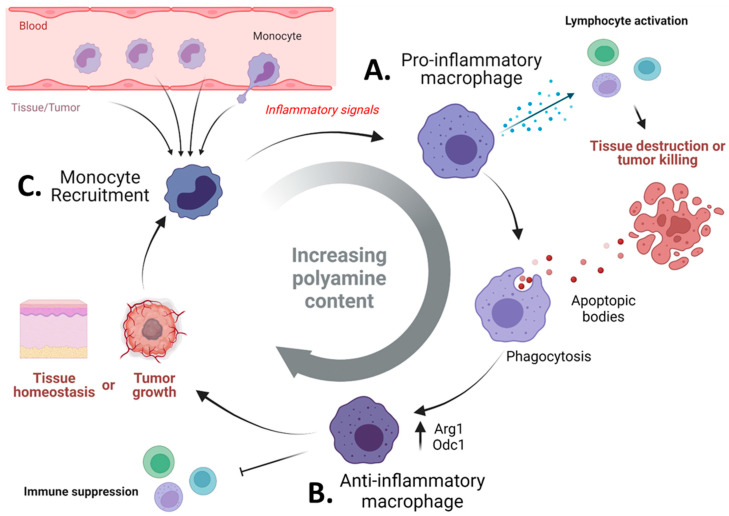Figure 3.
Polyamines maintain the delicate balance of immunity and tolerance by myeloid cells. In typical scenarios, inflammation is a transient process, by which immunogenic signals eliciting a response are cleared. In order to slow down these processes, the immune system has several internal checkpoints meant to prevent uncontrolled immunity from occurring. These processes occur over time, with an initial wave of inflammation followed by upregulation of checkpoints designed to put the brakes on the immune system (A). For myeloid cells, this switch to a pro-resolution phenotype is associated with arginase-1 metabolism, ODC1 activity, and ultimately polyamine synthesis. This response is stimulated by the phagocytosis of apoptotic bodies, which act as a source for arginine and nucleotides for these cells to suppress and proliferate, respectively (B). It is likely that tumors take advantage of this process as the tumor continues to grow by providing chronic inflammatory signals to recruit myeloid cells and then providing apoptotic bodies (and other immunomodulatory signals) to promote their M2-like or pro-resolving phenotype (C). From the perspective of polyamines, they increase as the cell goes from an inflammatory phenotype to a pro-resolution or immunosuppressive phenotype. Thus, a deficiency in polyamine levels may perpetuate inflammation, while conversely, excessive levels promote tumorigenesis and immunosuppression. Figure created with BioRender.com.

